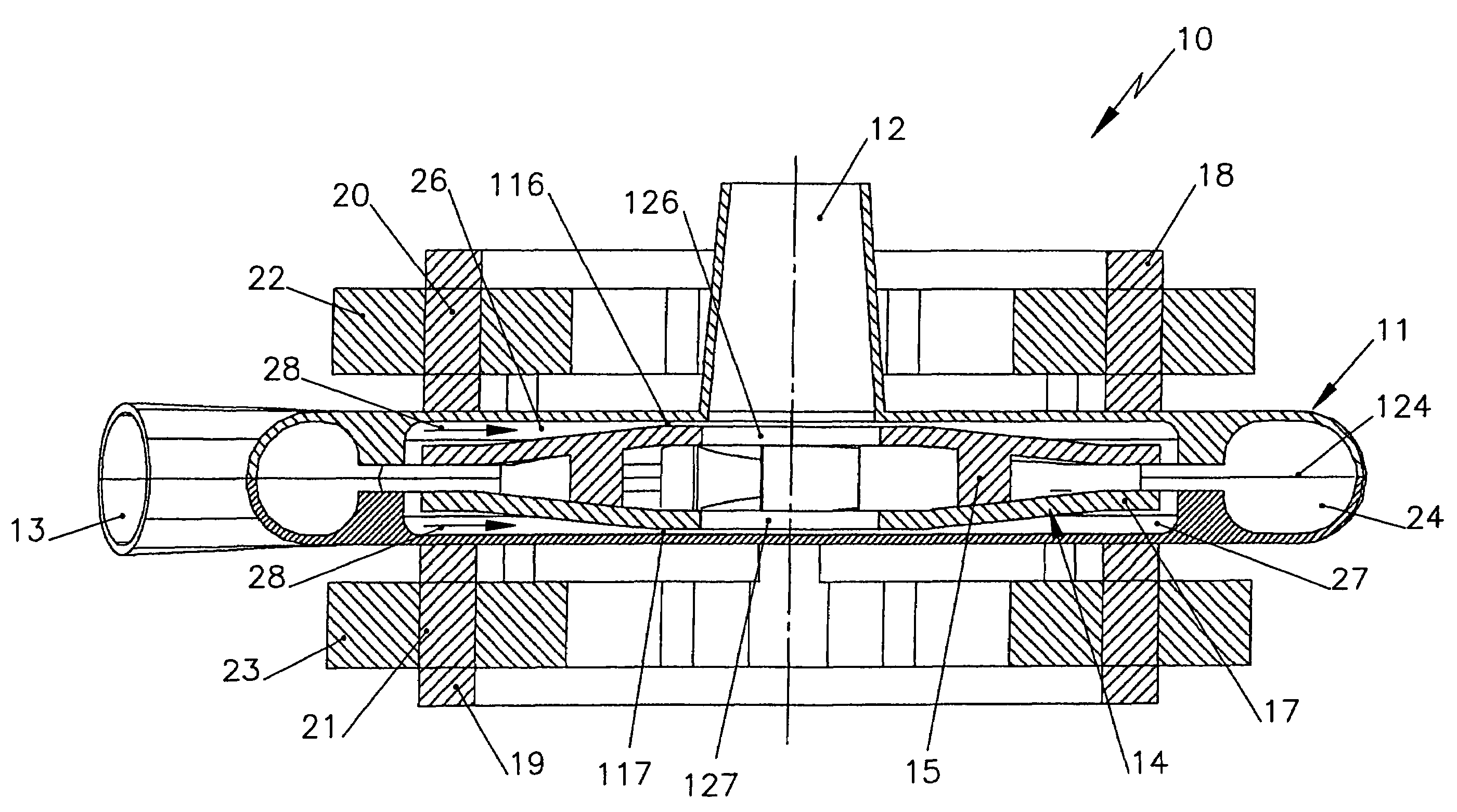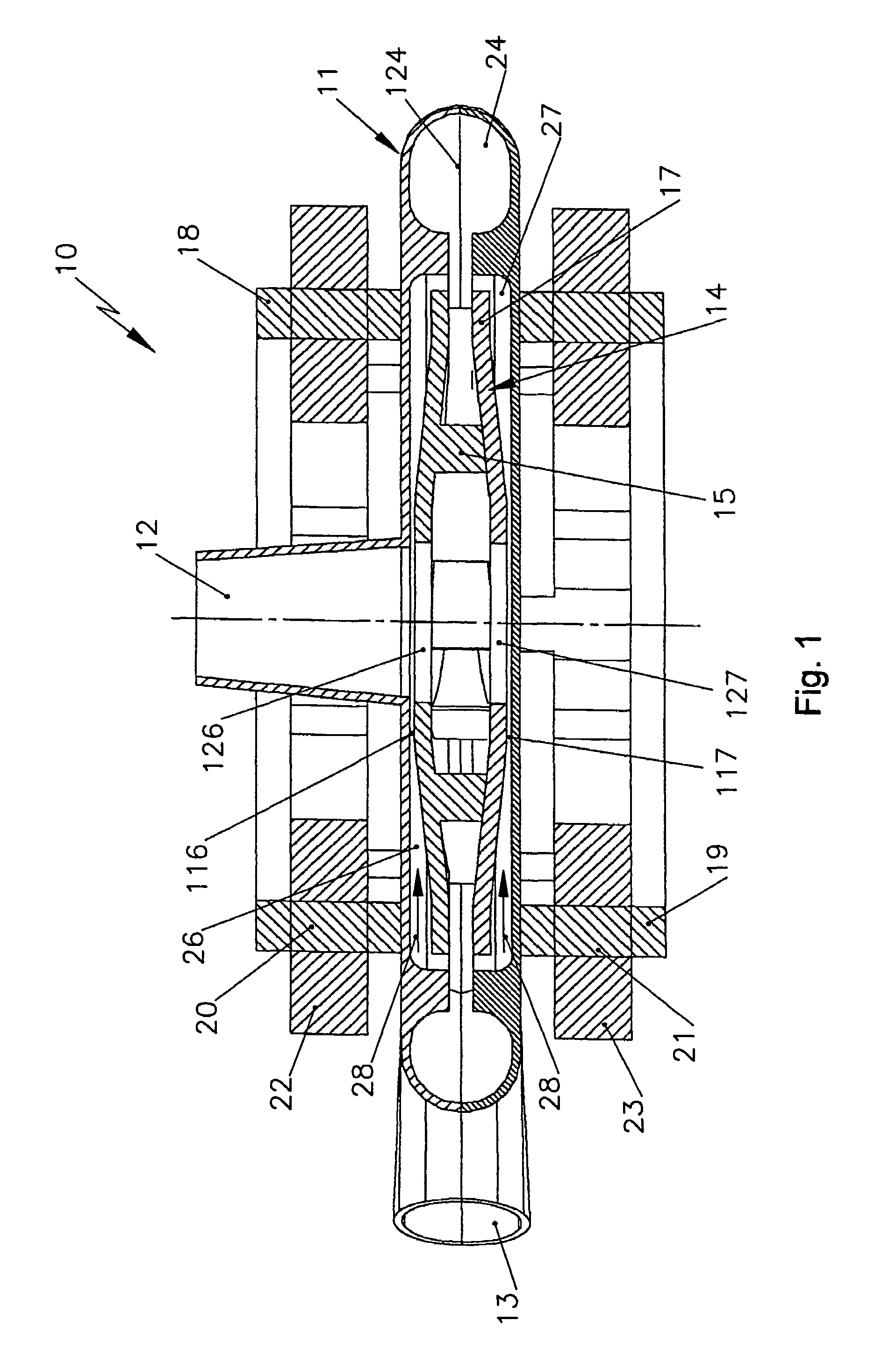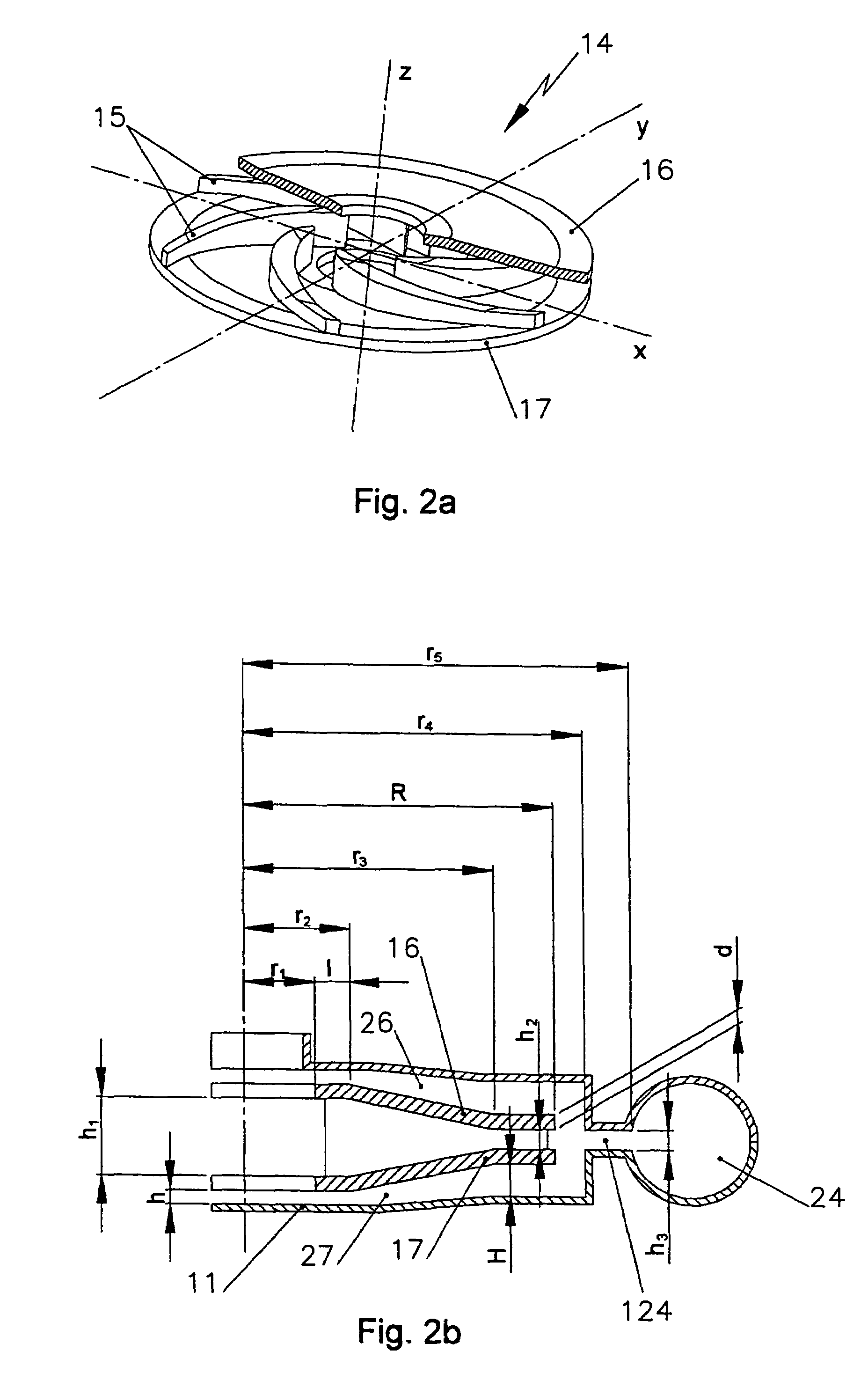Blood pumps of conventional design, in which the drive of the rotor is done by an
electric motor with a supported shaft that penetrates the pump housing and is provided with a shaft seal are therefore unsuited for permanent implantation.
Furthermore, the pump rotor in the housing must be guided by end journal bearings that are bathed with blood; these bearings wear and from local heating denature
blood proteins and are capable of activating the
coagulation system, which can lead to emboli from abrasion and clots.
Any possible use of this principle must take Earnshaw's theorem into account, which states that it is not possible to keep a body floating in space in a stable position by means of constant magnetic, electrical, or gravitational fields.
Any apparent position of equilibrium is in fact unstable, since the body is in that case at a maximum of
potential energy.
Besides the complex production, this embodiment requires an elongated gap between the rotor and the housing with only inadequate purging and
high energy consumption for the axial stabilization, which must counteract the considerable hydraulic axial shear that is generated by an open
impeller.
Because of the externally located stators for the drive and positional regulation, this pump requires a relatively large amount of installation space.
Problems also arise in versions with open impellers because of the high hydrodynamic axial shear, which unavoidably occurs.
To overcome them, additional active or passive
magnet bearings as well as hydrodynamic aids in the form of nozzles,
impact plates, inflow tubes, flow resistors, and sealing gaps are proposed, all of which increase the complexity of the
system, lessen its efficiency, create flow stasis zones, induce high shear stresses, and are thus entirely unsuitable for the realization of a
blood pump, especially for permanent implantation.
In this version as well, there is the risk of high shear stresses and the generation of flow stasis zones on the back side of the rotor.
All these proposals share the
disadvantage of mechanical wall contact between the rotor and the housing, with the known consequences of damage to the blood.
This disadvantageously makes for an extremely complex
mechanical construction of the rotor and multiple stators as well as extremely complex regulating
electronics with an additional
energy requirement, especially since to avoid high axial destabilizing forces, an ironless motor has to be used, which because of its poor efficiency heats up sharply.
A
disadvantage here is the long
axial length of the narrow, eccentric bearing gap, in which high shear stresses are operative, and which for being washed out requires auxiliary blades and a purging circuit from the high- to the low-pressure side of the pump.
This arrangement involves the familiar risks of high shear and inadequate heat dissipation, which lead to traumatization of the blood.
Other disadvantages of this version are that the open pump rotor is surrounded on all sides relative to the housing by narrow gaps, in which high
viscous friction prevails.
Moreover, the housing is complicated to manufacture.
The embodiment of a covered pump rotor shown in FIG. 20, with a surface structured in wedgelike shape in sectors, does not overcome these disadvantages, especially since it cannot be seen what path the blood is supposed to take to flow through such a rotor.
This pump must be embodied with two inlets, or the inflow must be diverted inside the pump by 180°; the result is large wetted internal surfaces as well as questionable hydrodynamic stability.
If that does not suffice, an active
magnet bearing is provided for radial stabilization, but this represents additional electronic complication and expense.
A critical assessment of the prior art discussed consequently shows that the contactless rotation of the rotor of a
centrifugal pump in the housing is attained either by means of
high complexity and expense for sensors and electromagnetic regulation, or at the cost of a high hydrodynamic load on the blood from damaging shear stresses.
 Login to View More
Login to View More  Login to View More
Login to View More 


